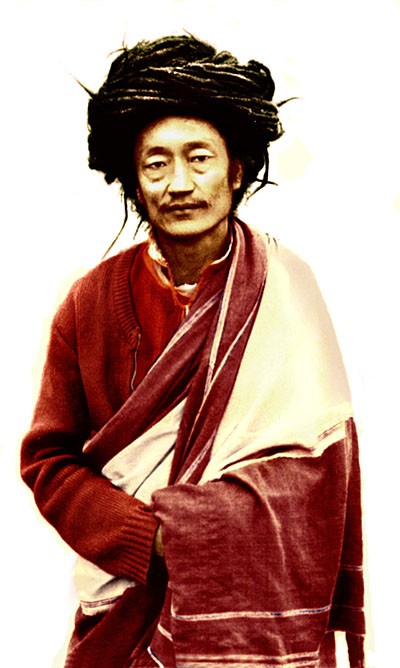I did some "serious research" on this particular bit of terminology, and I found some good things in journals, books, etc., but I found this and like it too.
Posted by Victoria S Dennis on September 03, 2007
: : I am looking for the origin of the phrase "going native". It is often used to describe anthropologists' or travellers' growing immersion in new cultures they are engaged with (and has a racist note in it). But I can't find a source and would be grateful for information
:
: Not an origin, but another, perhaps older, use. In the (U.S.) State Department, diplomats and other embassy personnel are rotated to differenet countries at intervals, at least partly to avoid the problem of them "going native," meaning that they become so acculturated and familiar that they begin to identify with and sympathize with the locals, to the point of not representing our own national interests. It's a delicate balance: diplomacy requires experience and understanding of the host country, but too much experience, and one can forget who's signing the pay checks.
In British English it dates from the 19th century. The British felt it very important to their collective prestige in the Colonies to maintain their identity as "sahibs", as distinct from the black or brown "natives", so much anxiety was caused if any member of the British community showed signs of "going native" in his habits, e.g. by adopting the local dress and socialising with the locals. This anxiety lasted as long as the Empire itself did; in Kenya in the 1940s my father, aged 19, used to take off his shoes to save them getting dusty when riding his motorbike across the open savannah. When this was reported to his family he was taken to task by his elders for "going barefoot in public like an African". (VSD)
http://www.phrases.org.uk/bulletin_board/55/messages/565.html
Boy howdy, do I like blogs - I can say "to hell with academic sources" whenever I feel like it. It's liberating.
Anywho, the phrase "going native" is darn close to a dirty phrase in most anthropological circles. The idea is that, to maintain objectivity and scientific accuracy, a certain distance must be kept from the "subject material" (what a terrible way to talk about human beings!). The thing is, I'm not an anthropologist (at least by name - everybody does anthropology work whether or not they write it down and publish it) and I never plan to be one. I'm a musician. Most of the time, I feel that throwing "-ologist" on the end of something beautiful robs it of its warmth and relegates it to the realm of soggy textbooks in dank library-dungeons.
My reason in going to and vision for being in Bylakuppe relates to what Bela Fleck did in his recent exploration of the origins of the banjo in Africa. There are definitely some of what could be called "ethnomusicological points of contact" made by what Bela did, through making high quality recordings and re-exposing people to an instrument that left their country and evolved in a different way in a different place, by comparing the modern American banjo to its analogues in various regions, and by interviewing the musicians who play these instruments at both virtuoso/professional and casual levels (if those terms may be very loosely applied - music doesn't mean the same thing everywhere). But his purpose in Africa - and, to a musician, this purpose is a sacred one - was to find some great musicians and make some great music. He didn't only play the banjo, the instrument for which he is famous, but he spent time learning instruments local to the areas. In the second picture, you can see that he traded instruments with the master musician he was visiting.


This is the kind of "going native" I'm into. Diehl, who wrote the book that was a large inspiration for going to a Tibetan community in India, was inducted into and played keyboard in a Tibetan rock and blues band - if that doesn't require some going native, I don't know what does. Playing that kind of music simply can't be done well whilst one is "detached." Rock and blues music don't work without mutual understanding and intense connection.
For the sake of music, and for the sake of the people who make it, Bela Fleck learned historical material along the way, and no doubt researched some of the areas of scholarship important to anthropologists that touched his journey (though I doubt he spent a bunch of time with JSTOR - hey, maybe). The wonderful thing is that that kind of learning is natural, completely owned by the learner, and takes none of what might be called "effort." Frustrations and troubles come up - the plane tickets might be expensive and the van might break down in the middle of the route and it might be easy to mistake the mosquitoes for birds of prey - but these problems are swallowed up in the joy of love for what one is doing.
When asked about the perfect humanity (zhi ren 至仁), Zhuangzi replies, “Perfect humanity is without affection for parents,” and further explains,
The ultimate humanity is supreme and so filial piety is not enough to describe it. . . . It is easy to be filial by being reverent, but it is difficult to be filial with love; it is easy to be filial with love, but it is difficult to forget one’s parents; it is easy to forget one’s parents, but it is difficult to make parents forget me; it is easy to make parents forget me, but it is difficult to forget the whole world; it is easy to forget the whole world, but it is difficult to make the world forget me. (Zhuangzi 14.497–99)
Here, perfect humanity as that without affection for parents does not mean that parents are obstacles to perfect humanity. It simply means to forget your parents. It is more difficult to forget your parents than to love them, because as long as you know that you should love them, you can at least make some effort to do so. Here, to forget your parents does not mean to not love them; rather, it is to love them without knowing that you ought to love them and that you are loving them. When you love your parents so naturally, spontaneously, and effortlessly, you have forgotten your parents, which is certainly something more difficult to accomplish. So it is easy to love with effort, but more difficult to love effortlessly. It sounds paradoxical, but conveys a profound message: sages can do things effortlessly, but one cannot become a sage without making great effort.
From: Respecting Different Ways of Life: A Daoist Ethics of Virtue in the Zhuangzi by Yong Huang
How tragic when people get so caught up in research and discourse that they forget why they got into the focus in the first place! Happiness flitters away.
My faculty mentor, Dr. Grimshaw, he has expressed sadness and frustration at the ethnomusicology world's continual shifting of paradigms from participatory observation to cold, purposely outsider observation and back again. I vibed with his view of how to do in-field research - by golly, be in-the-field! Participate in the culture as well as the subject of study, whatever it is, insomuch as it doesn't interfere with personal moral beliefs (and it's not a bad idea, especially for a Latter-day Saint, to evaluate whether or not a cultural practice is at odds with core doctrine or if it is really just at odds with Mormon/American/Utahn/Whatever culture). So what if you lose some objectivity? You gain some life. Then, when back in the office, sitting in front of the computer, be fully there as well and do some scholarly justice to the material.
So, to tie it together, I want to (need to) "go native" as much as possible if I want to understand and be able to make this music from the inside out, and if I want to effortlessly (using Zuangzi's definition) take part in the music and culture, understanding that no matter what I do I will have 23 years (is that really how old I am?!) of background that is unavoidable and inexpugnable. Heck, I might seem as strange to the Tibetans as these guys would have to the Londoners:
 |
| These guys from Vanuatu visited London as part of a British television series. They wore British clothes most of the time, in case you're wondering. Everybody's got to adapt a little! It was probably too darn cold anyway. |
but that's just part of life and intercultural interaction. I'm cool with that. We are going to learn from each other, not because I'm American and have something to teach them, or because their culture is so much better and richer than mine (these being the two polar sides that plague many views of world culture), but because we are all human beings with something to give and room to take something in return.
We're going to make some great music, and make some great friends. And, damn the torpedoes, ain't no-one gonna stop it.
P.S.
This is pretty funny.
http://stuffwhitepeoplelike.com/2008/02/22/72-study-abroad/



















